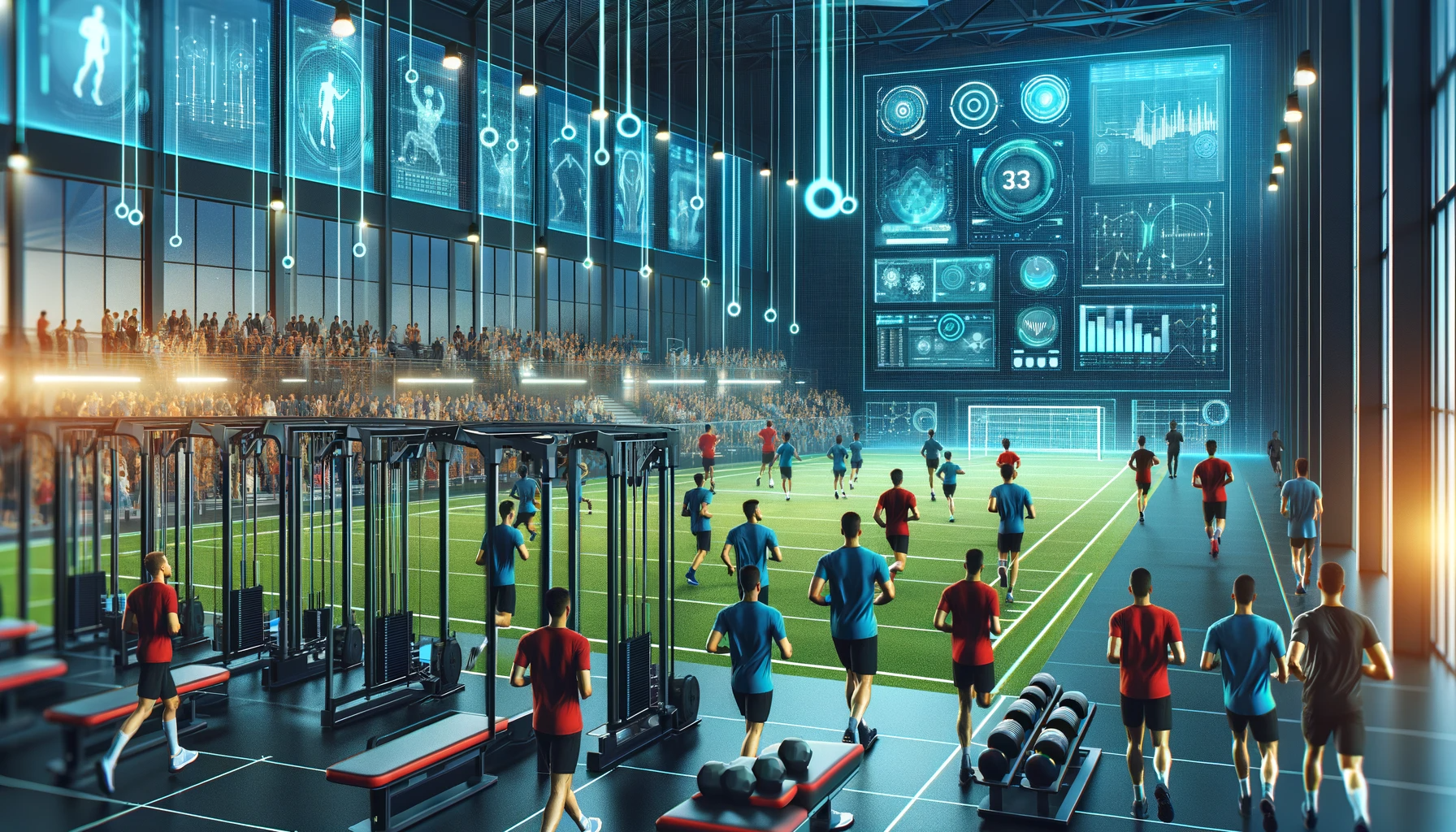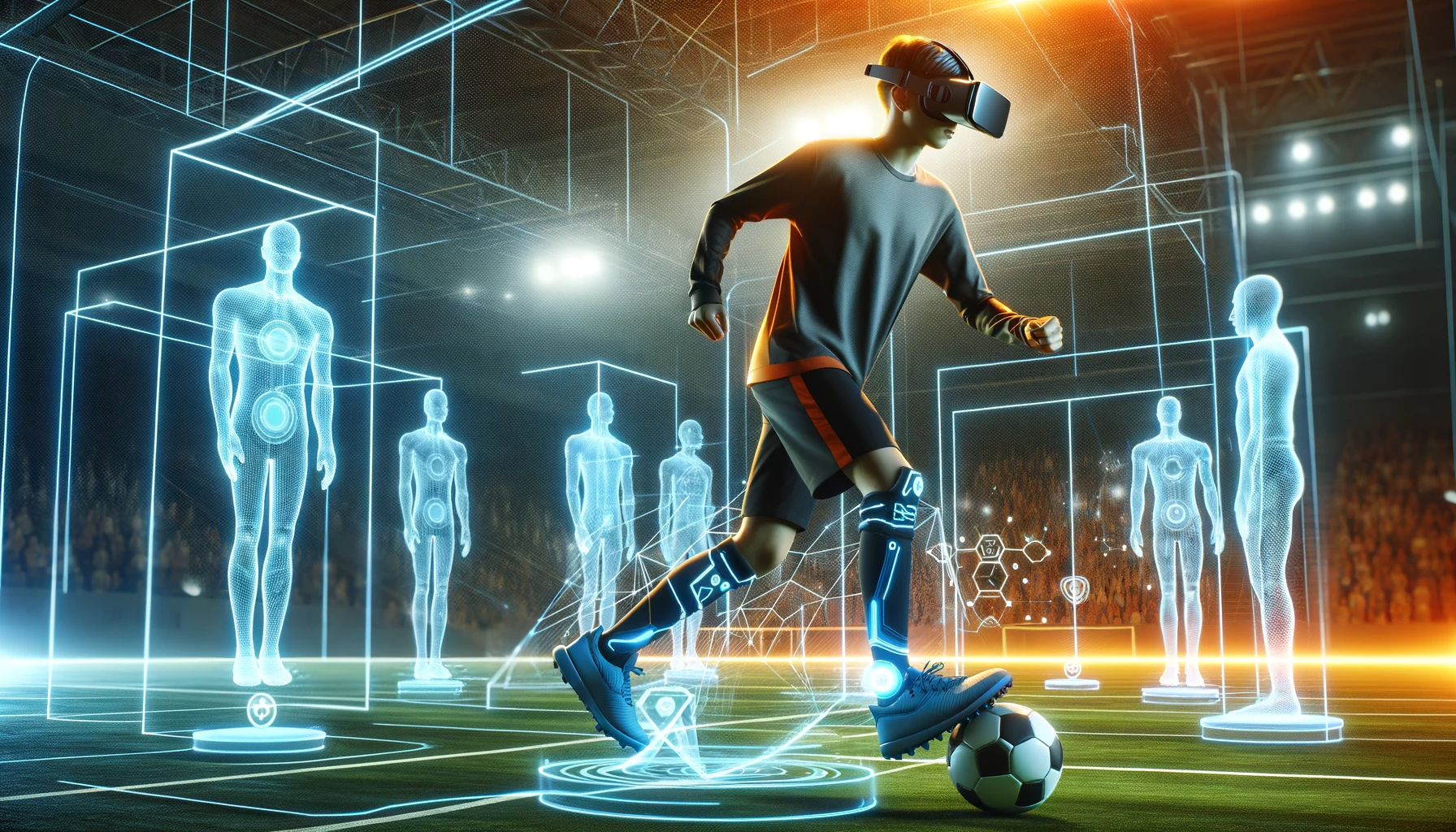Beyond the Stadium
Professional sports and athletics have always been arenas of intense competition, where the pursuit of excellence and the quest for victory drive athletes and teams to push the boundaries of human performance. In this relentless pursuit, the world of sports has found a formidable ally in the form of Artificial Intelligence (AI). From performance analytics that dissect every move on the field to talent scouting that uncovers hidden gems, from injury prevention strategies that prolong careers to fan engagement tactics that bring spectators closer to the action than ever before, AI is leaving an indelible mark on the world of professional sports.
As the intersection of technology and athleticism continues to evolve, AI is not just enhancing the playing field; it’s rewriting the playbook. This article embarks on a journey to explore the transformative role of AI in the world of professional sports and athletics. It delves deep into the ways AI is revolutionizing the industry, from optimizing athlete performance to reimagining talent scouting, and from safeguarding athlete health to enhancing the fan experience. Join us as we uncover the AI-driven innovations that are reshaping sports as we know it.
AI’s Role in Performance Enhancement
In the fiercely competitive world of professional sports, even the slightest edge can make the difference between victory and defeat. This is where Artificial Intelligence (AI) steps onto the field, offering a game-changing advantage by revolutionizing the way athletes train, analyze their performance, and strategize for success.

Performance Analytics: Decoding the Game
At the heart of AI’s role in performance enhancement lies the ability to gather, analyze, and derive insights from an overwhelming amount of data. Athletes, coaches, and teams now have access to real-time data streams that capture every facet of a game or training session. AI algorithms process this data, providing valuable insights into an athlete’s performance. Whether it’s tracking a basketball player’s shooting accuracy, a soccer player’s sprint speed, or a tennis player’s serve accuracy, AI can dissect every move on the field, offering a comprehensive analysis that was once impossible to achieve manually.
This level of precision allows athletes and coaches to identify strengths and weaknesses with unparalleled accuracy. For instance, a tennis player can pinpoint the exact type of serve they struggle to return, and a basketball coach can analyze a player’s shot selection to improve their shooting percentage. With AI, performance analysis goes beyond basic statistics; it delves into the minutiae of each play, enabling athletes to make data-driven decisions for improvement.
Wearable Technology: The AI-Powered Coach
Another groundbreaking application of AI in sports comes in the form of wearable technology. Athletes now have access to smart wearables that monitor various physiological and biomechanical metrics in real-time. These wearables, equipped with sensors and AI algorithms, track heart rate, motion, muscle activity, and more, providing a comprehensive picture of an athlete’s physical state during training or competition.
For example, a sprinter wearing a smart suit can receive instant feedback on their running form, helping them make real-time adjustments to optimize performance and minimize the risk of injury. In football, GPS-equipped vests worn by players can track their movement patterns, helping coaches understand their workloads and make strategic decisions during a match.
Wearable technology not only aids in performance optimization but also serves as a preventive tool by monitoring an athlete’s physical condition. AI can detect anomalies or signs of fatigue, allowing athletes to manage their training loads and reduce the risk of overexertion or injury. This real-time monitoring capability has become indispensable in professional sports, where the difference between peak performance and fatigue-induced mistakes can be a matter of seconds.
Biomechanics Analysis: Perfecting Form and Technique
In the world of professional sports, perfecting an athlete’s form and technique can be the key to success. AI-driven biomechanics analysis plays a pivotal role in this pursuit of perfection. High-speed cameras and motion-capture technology, combined with AI algorithms, allow for a comprehensive breakdown of an athlete’s movements.
Whether it’s a golfer’s swing, a swimmer’s stroke, or a gymnast’s routine, AI can dissect the nuances of each movement, identifying areas for improvement. Coaches and athletes receive precise feedback on body positioning, angles, and timing, enabling them to fine-tune their techniques. This level of analysis goes beyond what the human eye can perceive, making it an invaluable tool in refining an athlete’s skills.
Moreover, AI can simulate various scenarios to help athletes prepare for different game situations. For example, a soccer player can use virtual reality combined with AI to practice penalty kicks against a digital replica of a goalkeeper, fine-tuning their aim and power. This type of immersive training not only boosts confidence but also enhances decision-making under pressure.
In the next section, we will explore how AI is transforming talent scouting and recruitment in professional sports, uncovering hidden gems and reshaping team dynamics.
AI-Powered Talent Scouting
In the world of professional sports, identifying and recruiting top talent is a perpetual quest. The traditional methods of talent scouting, which relied heavily on subjective judgments and limited data, are undergoing a profound transformation thanks to AI-driven algorithms and data analytics.
The Data-Driven Approach
AI algorithms have the capability to process an unprecedented amount of data from various sources, providing a comprehensive view of an athlete’s performance. This data includes statistics, biometric information, and even social media activity. By analyzing this data, AI can uncover patterns and trends that may have otherwise gone unnoticed.
For example, in basketball, AI can analyze a player’s shooting accuracy, defensive skills, and rebounding ability, not just from official games but also from training sessions and even social media posts showcasing their skills. This holistic approach to data analysis allows talent scouts to build a more nuanced profile of a player’s capabilities and potential.
Predictive Analytics in Scouting
One of the most intriguing aspects of AI-powered talent scouting is its predictive capabilities. By analyzing historical data of athletes who have succeeded in professional sports, AI can develop predictive models to assess the potential success of up-and-coming players.
For instance, AI algorithms can identify key performance indicators that correlate with future success, such as a sprinter’s acceleration time or a soccer player’s ball possession statistics. When scouting new talent, these predictive models can highlight players who exhibit similar traits, helping scouts focus their attention on individuals with a higher likelihood of success.
Scouting Beyond Borders
AI transcends geographical boundaries in the search for talent. It allows scouts and teams to cast a wider net, identifying promising athletes from diverse regions and backgrounds. With AI, talent can be discovered in remote areas, where traditional scouting networks may not have a presence.
Additionally, language barriers are no longer a hindrance in talent scouting. AI-powered translation tools enable scouts to communicate with athletes and coaches from different parts of the world, facilitating the recruitment process and ensuring that talent is not overlooked due to communication challenges.
Injury Prevention and Athlete Health
While AI’s impact on talent scouting and performance enhancement is evident, its role in athlete health and injury prevention is equally transformative. Athlete health is paramount in professional sports, and AI is increasingly becoming a valuable ally in safeguarding it.
Monitoring Systems for Early Detection
AI-powered monitoring systems continuously track an athlete’s physical condition, assessing various biometric markers in real-time. These systems can detect anomalies or signs of fatigue, providing early warnings to athletes, coaches, and medical staff. For example, an elevated heart rate during rest periods or abnormal sleep patterns can indicate potential health issues or overtraining.
Injury Risk Prediction Models
AI has the capacity to predict injury risks based on an athlete’s performance data, training workload, and physical condition. Algorithms analyze historical injury data to identify patterns and factors that contribute to specific injuries. By monitoring athletes’ movements and loads, AI can predict the likelihood of injuries and suggest preventive measures.
Personalized Rehabilitation Programs
In the unfortunate event of an injury, AI continues to play a vital role in athlete recovery. AI-powered rehabilitation programs are tailored to individual needs, considering an athlete’s injury type, progress, and physical condition. These programs adapt as the athlete recovers, ensuring that the rehabilitation process is efficient and safe.
Optimizing Workloads
AI assists in managing athletes’ workloads to minimize the risk of overexertion. By monitoring training intensity and recovery periods, AI can provide recommendations to ensure that athletes maintain peak performance while avoiding overtraining, which can lead to injuries and performance decline.

Conclusion
In the ever-evolving world of professional sports and athletics, Artificial Intelligence (AI) has emerged as a game-changer, transforming various facets of the industry. From performance enhancement to talent scouting, and from injury prevention to fan engagement, AI has left an indelible mark on how sports are played, watched, and managed.
The impact of AI on performance enhancement is undeniable. Athletes and teams now have access to a wealth of data and insights that were previously unimaginable. Performance analytics, wearable technology, and biomechanics analysis have revolutionized the way athletes train and compete. AI has become the ultimate coach, offering personalized guidance and real-time feedback to optimize performance.
Talent scouting has also experienced a paradigm shift. AI’s data-driven approach, predictive analytics, and the ability to scout talent globally have reshaped the way athletes are discovered and recruited. The days of relying solely on subjective assessments are fading as AI-powered algorithms identify potential stars and hidden gems.
Injury prevention and athlete health have taken center stage in professional sports, thanks to AI-powered monitoring systems, predictive models, and personalized rehabilitation programs. Athletes can now perform at their best while minimizing the risk of injuries, and when injuries do occur, AI aids in their recovery.
Fan engagement strategies have been transformed by AI, creating more immersive and personalized experiences for sports enthusiasts. AI-driven platforms, augmented reality, and personalized content delivery have redefined how fans interact with their favorite teams and athletes. The boundary between the stadium and the living room has blurred, offering fans unprecedented access to the action.
However, it’s crucial to acknowledge that with great power comes great responsibility. Ethical considerations, data privacy, and the potential for bias in AI algorithms must be addressed vigilantly. Sports organizations, athletes, and technology providers must work together to ensure that AI is implemented responsibly and inclusively.
The future of professional sports and athletics is undoubtedly intertwined with AI. As technology continues to advance, AI’s role in reshaping the industry will only grow. Athletes will continue to push the limits of human potential, scouts will uncover new talent from unexpected corners of the globe, injuries will be prevented with greater precision, and fans will enjoy more immersive and personalized experiences.
In the ever-evolving arena of sports, one thing is clear: AI has taken its place as a valuable teammate, coach, and entertainer, revolutionizing the way we play, watch, and experience sports and athletics. As we embark on this exciting journey, the possibilities for AI in sports are as limitless as the human potential it seeks to enhance and celebrate.
